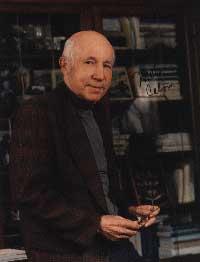Melvin Calvin in memoriam
Melvin Calvin was born on April 8, 1911 in St. Paul (Minneapolis, USA). He earned a doctorate from the University of Minnesota in 1935, but his career has been related to the University of Berkeley in California. In it he began to work in the late 1930s, being appointed professor in 1947 and professor emeritus in 1971. Despite his retirement, he did not give up research work and until very recently he is investigating. In his professional career he has written seven books and five hundred articles.

Melvin Calvin died Jan. 8 in a Berkeley hospital. The start of his career is related to an accident. In 1936 an accident occurred at the plant of the chemical company ICI in Manchester (England). The colorless compound Ftalonitrilo was being synthesized, but in one of the processes the result was blue. Apparently, instead of inserting a piece of metal from a crack in the container and synthesizing the phthalonitrile, a new compound called phthalocyanin is obtained. This was the first compound of a new family.
Calvin went on to graduate from the University of Manchester at the same time and soon realized that the compound synthesized at the ICI was very similar to hemoglobin and chlorophyll. Professor Michael Polanyi suggests that phthalocyanin was used to study the relationship between the structure and stability of these two elementary molecules. This study marked the future of Calvin's work.
In 1949 he became interested in the chemical details of photosynthesis. Unfortunately, this reaction cannot be imitated in the trial and with dead substances. Therefore, the parts of the process cannot be studied in detail and live cells must be used for complete study. In addition, photosynthesis reactions are very fast and the process cannot be stopped in the middle of the pathway.
To analyze the process, Calvin and his team used radioactively marked carbon dioxide. This carbon dioxide (IV) contained carbon 14. They allowed plants to use marked carbon dioxide for a few seconds. The components were then crushed and separated by paper chromatography. Of course, substances containing radioactive carbon should be synthesized in the first steps of photosynthesis.
The work progressed very slowly, but in sections it was possible to know all the steps of the photosynthesis process. This happened in 1957. This work represented the 1961 Nobel Prize in Chemistry to Melvin Calvin.
Buletina
Bidali zure helbide elektronikoa eta jaso asteroko buletina zure sarrera-ontzian











